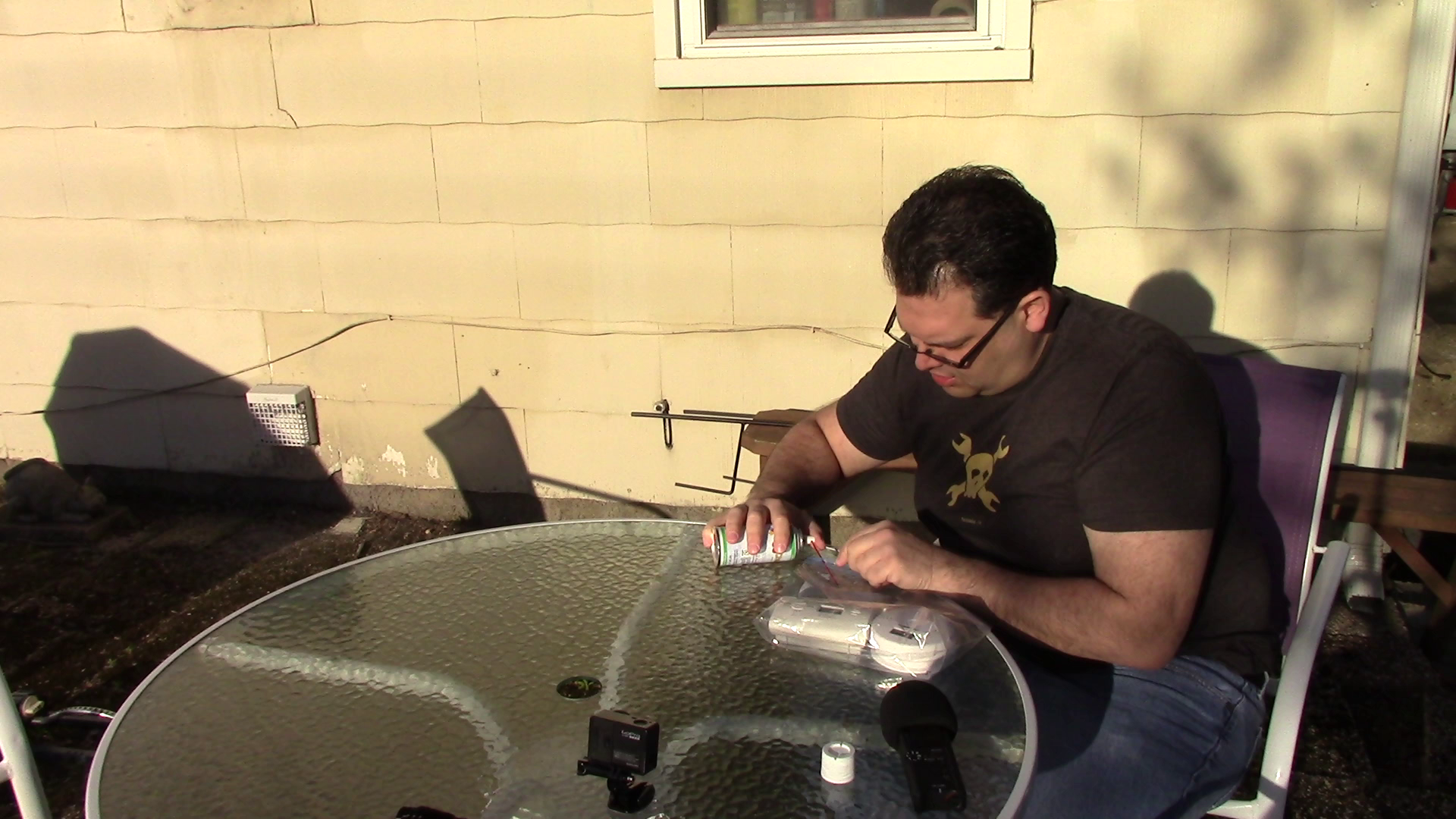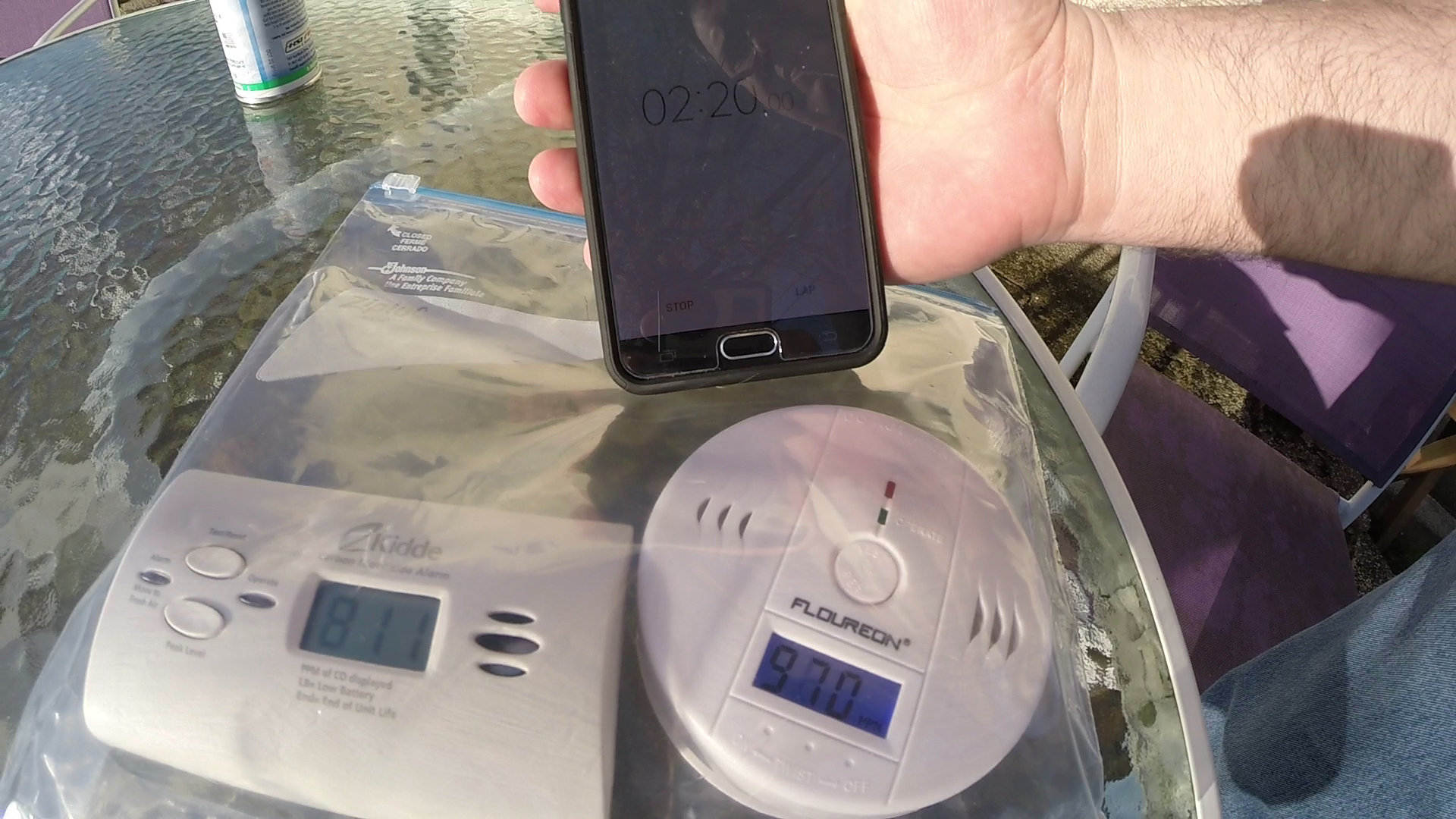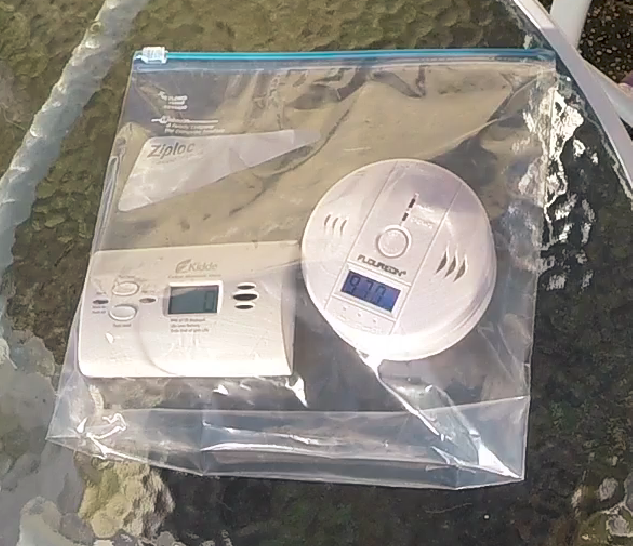I'll be the first to admit that this is not a scientific test. However, it is a practical test that anyone can do at home. First a bit of safety - do this test outside, and be careful to not inhale any of the CO check gas.

I set things up on my patio table. The two CO alarms fit nicely into a 1 gallon Ziploc bag. I pushed out as much as air as I could from the bag, then zipped it down on the tube which comes with the CO check can. I started a stopwatch and injected the gas.
The Floureon sensor took just 17 seconds to start beeping. A CO alert is 3 beeps followed by 5 seconds of silence, then the pattern repeats. The Floureon sensor was already reading 830ppm. At 33 seconds, the Floureon sensor read 970 PPM while the Kidde sensor read 0 PPM.
At 51 seconds, the Kidde sensor displayed 415 PPM, but it didn't go into alarm.
The PPM displayed on the Kidde sensor continued to rise.
At 2 minutes 13 seconds, the Kidde sensor went into alarm.
The final display was 811 on the Kidde, and 970 on the Floureon.

 Adam Fabio
Adam Fabio
Discussions
Become a Hackaday.io Member
Create an account to leave a comment. Already have an account? Log In.